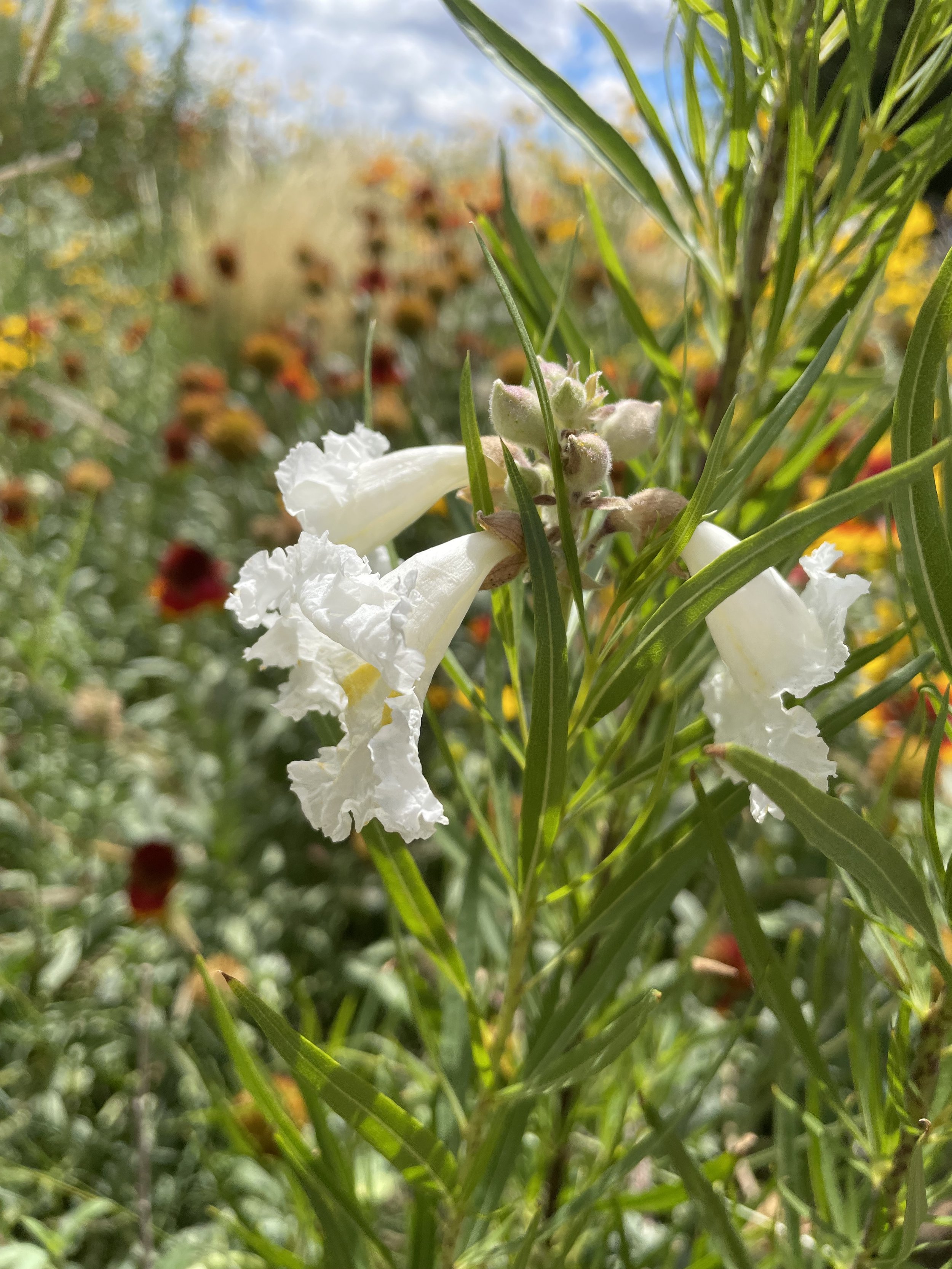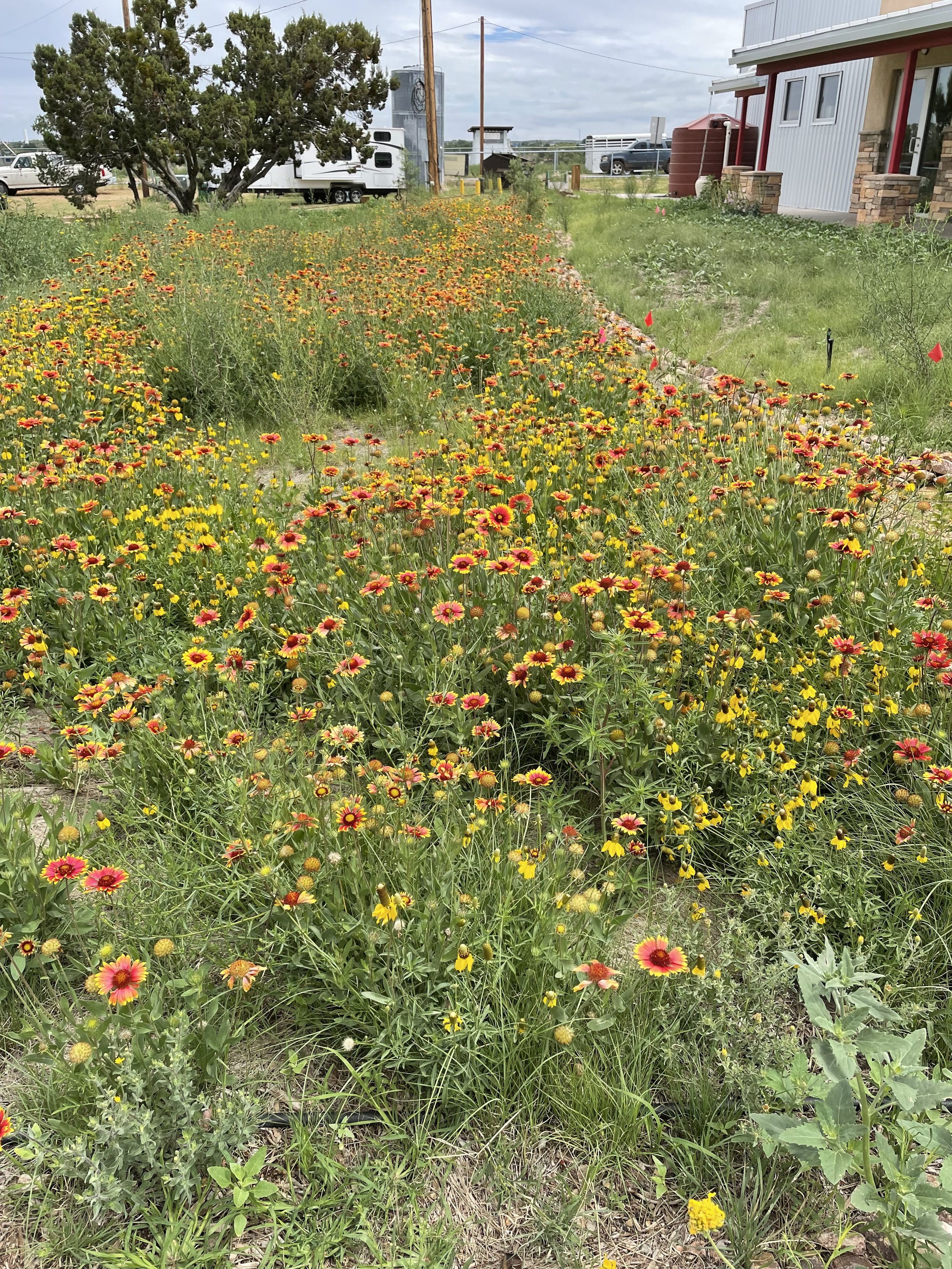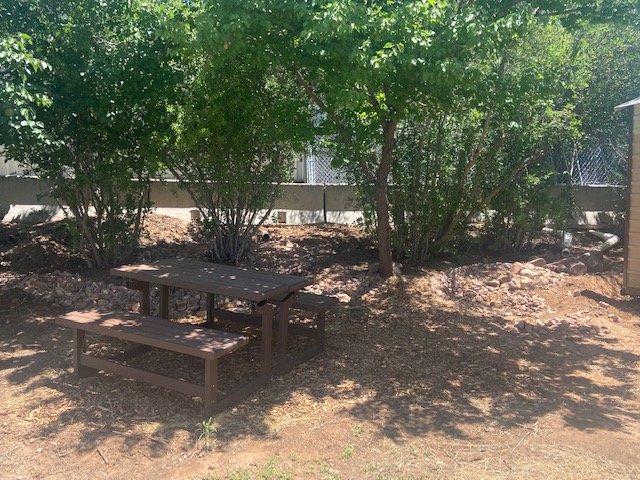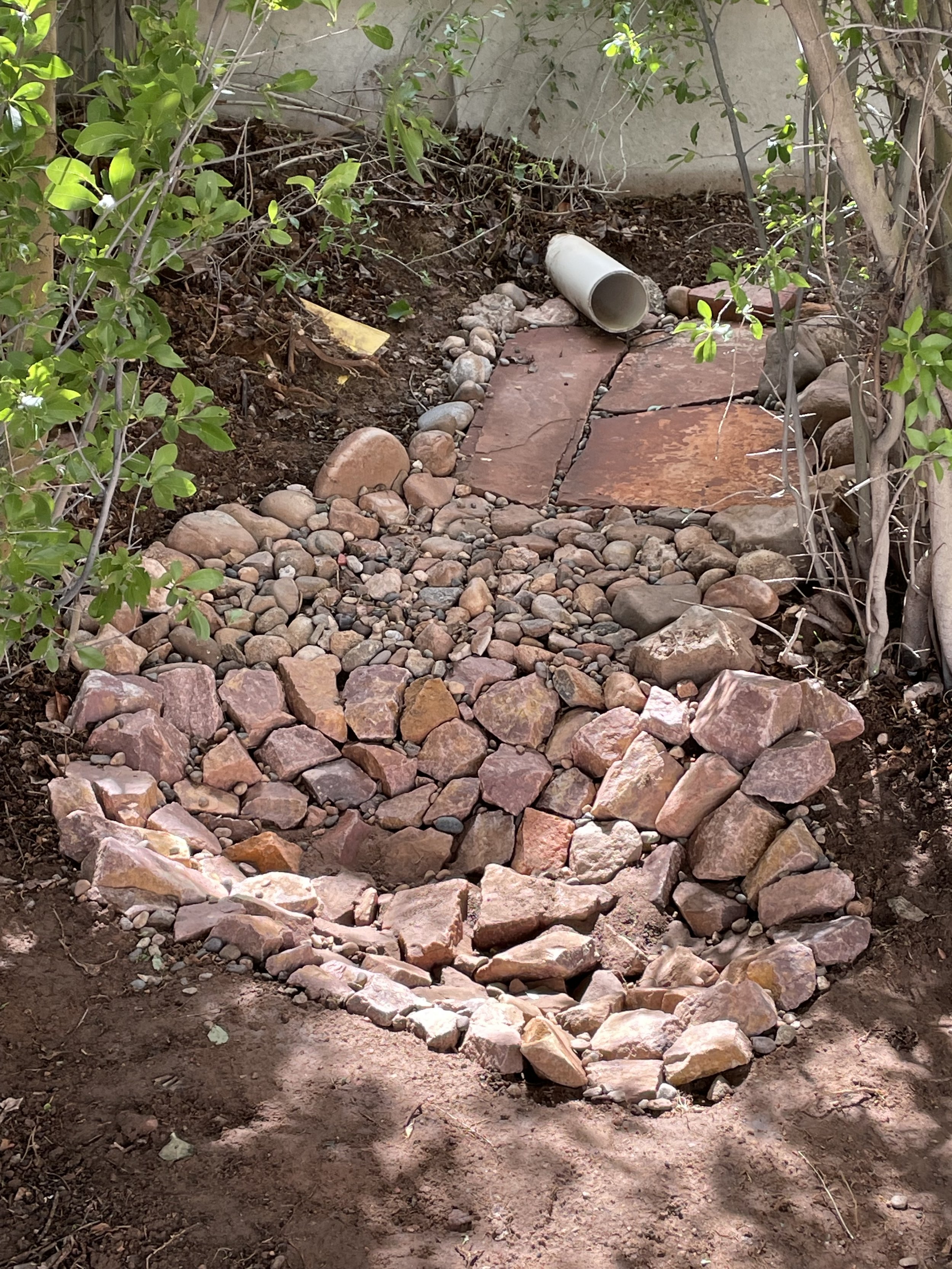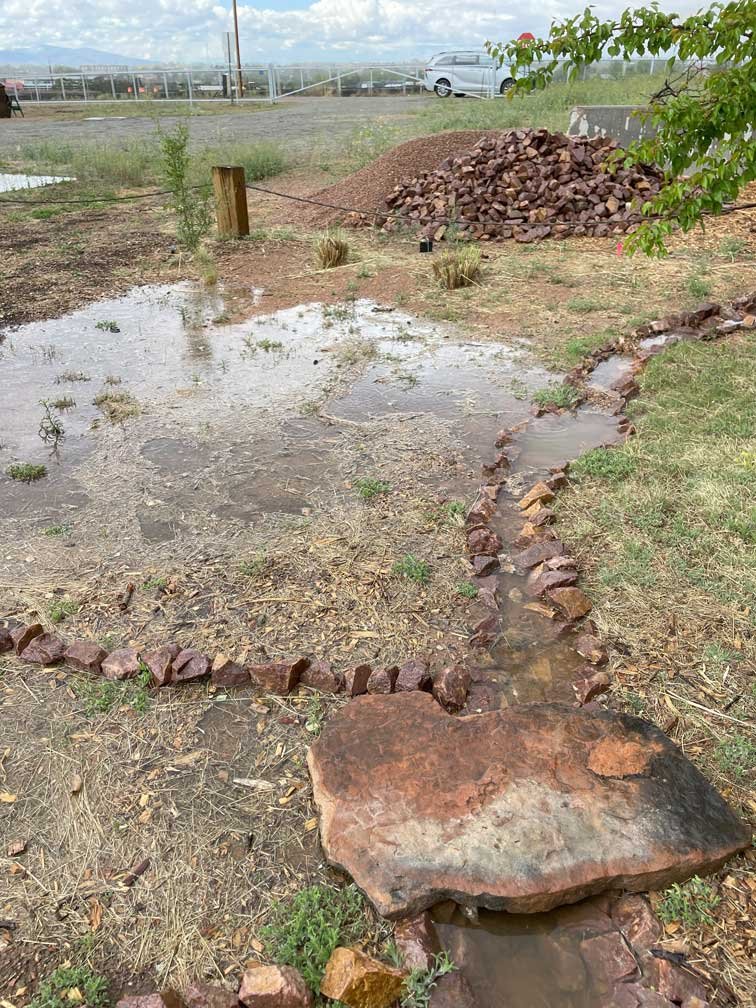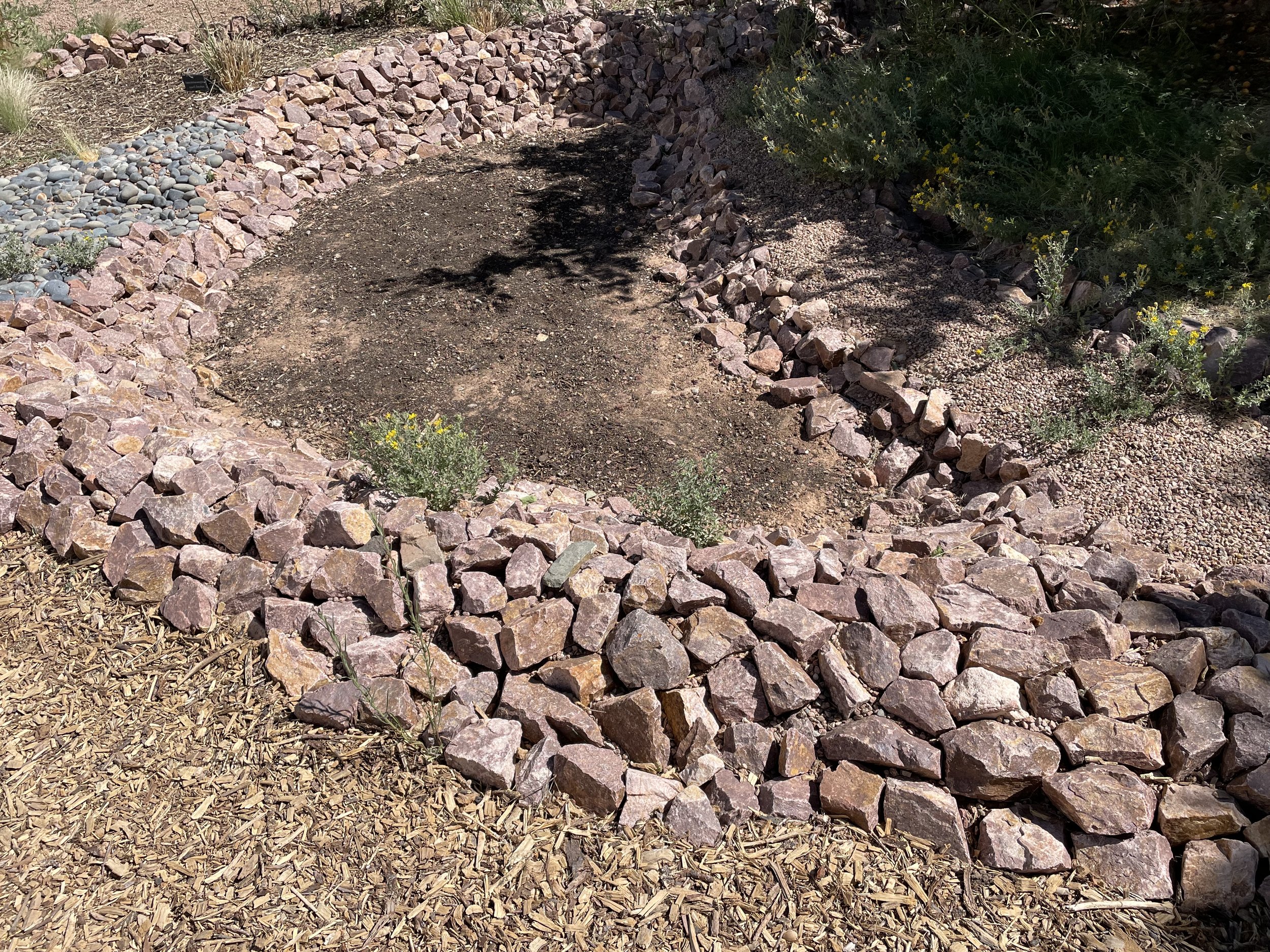Native Plant Demonstration Garden:
A Low-Water, Low-Maintenance Landscape for the Future
Project description: The SNaPP team designed a landscape plan for an area (11 ft x 45 ft) to the south, an area (60 ft x 20 ft) to the east, and an area (75 ft x 100 ft) to the west of the remodeled County Extension Office. The trees, shrubs, grasses, and forbs are native to New Mexico or to the Southwest. Candidate plants are all rated as having “low” or “very low” water requirements; final selections were based on very low maintenance requirements. The south plot was planted in a cover crop of hairy vetch and winter rye for three winters prior to implementing the planned planting in 2021. The 3 cisterns have been placed on concrete pads and replumbed so the overflows all feed into the newly reshaped west side.
Funding was provided by The Santa Fe Extension Master Gardeners, The Santa Fe Master Gardeners Association, and The Native Plant Society of New Mexico.
Educational component: The objective is to reinforce information presented in the SNaPP curriculum with practical examples, to allow hands-on experience for Master Gardeners and interns, and to offer a vibrant setting for educating the public. The gardens support educational components on storm water management, restoration and remediation of compacted soil with native grasses, planting for low water use, and planting for pollinators and other beneficial insects. They also provide opportunities for hands-on sessions on planting, drip irrigation, garden care and maintenance.
Before
SOUTH
WEST
EAST
Summer 2021
Summer 2022
The gardens are in their second year of development.
West
South
East
Rainwater Harvesting Demonstration Area
We constructed media lunas, one rock dams, Zuni bowls, and “leaky dams” to manage the water from the small animal barn’s downspouts. We finished by putting down grass seed, blue grama hay, and wood chips. We added a picnic table to create a pleasant hideaway under the apricot trees.
RESOURCES for MANAGING EROSION:
SNaPP Practical Tips - Harvesting Rainwater for Your Santa Fe Landscape
Let the Water Do the Work: Induced Meandering and Evolving Method for Restoring Incised Channels — Bill Zeedyk & Van Clothier
Rainwater Harvesting for Drylands & Beyond, Volumes 1 & 2 — Brad Lancaster
Zeedyk’s book is geared toward large installations. Lancaster’s books have great ideas for homeowners and are available at the SF Library.
Quivira Coalition Erosion Control Field Guide
YouTube has four short videos showing Bill Zeedyk supervising the construction of large erosion control projects. These are MUCH larger installations than ours; we’ve downsized everything. You can also see some of these systems managing rainwater at Santa Fe Botanical Garden.
Media luna — https://www.youtube.com/watch?v=PEwTYpCo8Qg
Zuni bowl — https://www.youtube.com/watch?v=9jGbAEtdyQM
One rock dam — https://www.youtube.com/watch?v=CX8rPv-YKIc
Rock rundown — https://www.youtube.com/watch?v=-f3BHQfe1TA
Before:
After:
Rain Garden
There was still uncontrolled ponding after the first wave of erosion controls.
So we installed a Rain Garden. Here’s an outline of the process.
Induced Meander
Click here for Bill Zeedyk’s Introduction to Induced Meandering
The Xerces Society
Donated habitat kits for planting on the east and west sides.
Demo Garden Details and Plant Lists:
West: Native Grassland Restoration
South: Southwest Courtyard Garden
East: Pollinator Garden
Monitoring: Progress will be documented in annual photos and soil testing every other year. Beneficial insect monitoring is ongoing. We began in 2020 and collect data twice a month May through September. The data collection process and summary of 4 years’ data were featured in the SFEMG Newsletter, March 2024. Success and succession of native grasses and forbs are recorded as What’s Blooming monthly from April through September.
Classes supported: SNaPP Let’s Grow, Identification of Native Grasses, Beneficial Insect Monitoring, Drip Irrigation, Soil Testing
MOCK UP of PLANNED Native Plant Garden
1. Cliffrose (Purshia stansburiana) 10. Yucca (Yucca glauca)
2. Grasses (tbd) 11. Giant Purple Sage (Salvia pachyphylla)
3. Chocolate Flower (Berlandiera lyrata) 12. Sideoats Grama (Bouteloua curtipendula)
4. Desert Willow (Chilopsis linearis) 13. James Buckwheat (Eriogonum jamesii)
5. Santa Fe Phlox (Phlox nana) 14. Little Bluestem (Schizachyrium scoparium)
6. Rocks 15. Yucca (Yucca baccata)
7. Pineleaf Penstemon (Penstemon pinifolius) 16. Fernbush (Chamaebatiaria millefolium)
8. Sand Cherry (Prunus pulmilla) 17. Giant Sacaton (Sporobolus wrightii)
9. Penstemon spp (tbd)










